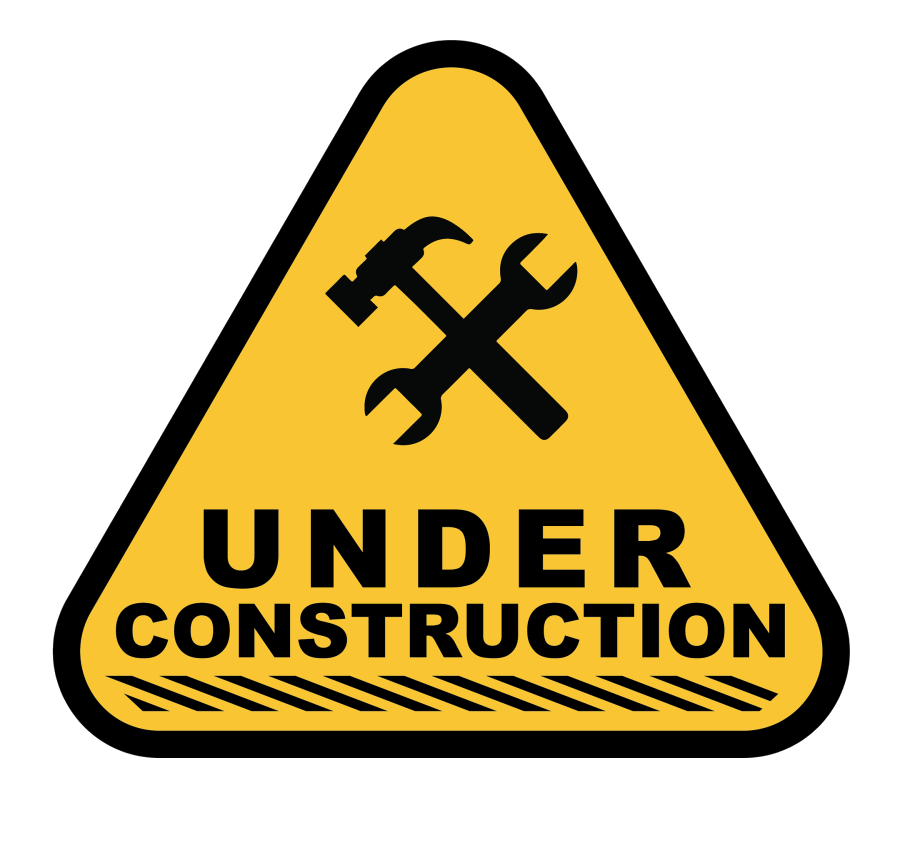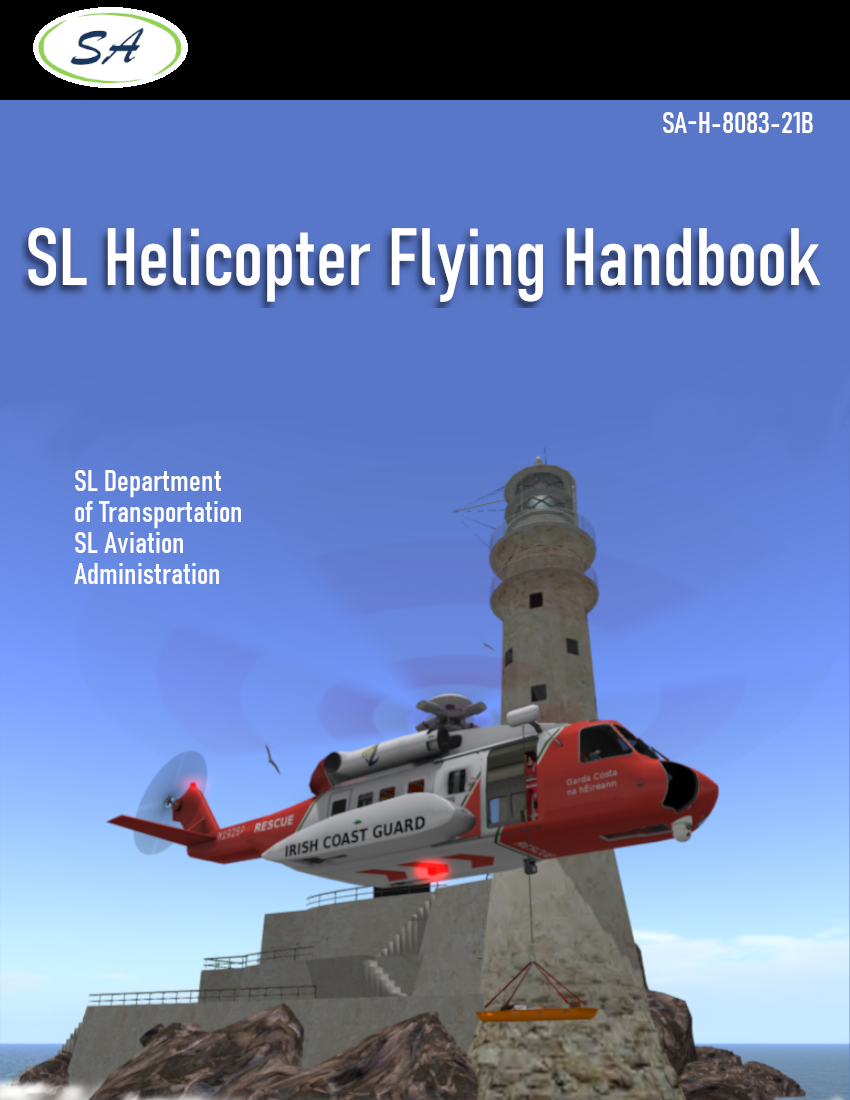|
|
| (16 intermediate revisions by the same user not shown) |
| Line 1: |
Line 1: |
| − | overview
| + | [[File:Sl-hfh-cover.png|right|250px|link=SL_Helicopter_Flying_Handbook]] |
| | + | |
| | + | This handbook is intended to introduce the fundamentals of helicopter flying for the SL pilot. While the majority of the information presented here applies to flying Shergood helicopters in SL, much of the information applies to RL helicopter flight as well. |
| | + | |
| | + | [[File:Under-contruction.png|128px]]UNDER CONTRUCTION - Not all sections are complete. |
| | | | |
| | <h1>Master Contents</h1> | | <h1>Master Contents</h1> |
| Line 9: |
Line 13: |
| | # [[SL Helicopter Flying Handbook/Aerodynamics|Aerodynamics]] | | # [[SL Helicopter Flying Handbook/Aerodynamics|Aerodynamics]] |
| | # [[SL Helicopter Flying Handbook/Helicopter Flight Controls|Helicopter Flight Controls]] | | # [[SL Helicopter Flying Handbook/Helicopter Flight Controls|Helicopter Flight Controls]] |
| − | # [[SL Helicopter Flying Handbook/Helicopter Systems|Helicopter Systems]] | + | # [[SL Helicopter Flying Handbook/Helicopter Systems|Helicopter Systems]][[File:Under-contruction.png|28px]] |
| − | # [[SL Helicopter Flying Handbook/Weight and Balance|Weight and Balance]] | + | # [[SL Helicopter Flying Handbook/Weight and Balance|Weight and Balance]][[File:Under-contruction.png|28px]] |
| | + | # [[SL Helicopter Flying Handbook/Helicopter Performance|Helicopter Performance]][[File:Under-contruction.png|28px]] |
| | |style="width: 50%; vertical-align: text-top;"| | | |style="width: 50%; vertical-align: text-top;"| |
| − | # [[SL Helicopter Flying Handbook/Helicopter Performance|Helicopter Performance]] | + | #<li value="7"> [[SL Helicopter Flying Handbook/Ground Procedures and Flight Preparations|Ground Procedures and Flight Preparations]] |
| − | # [[SL Helicopter Flying Handbook/Ground Procedures and Flight Preparations|Ground Procedures and Flight Preparations]]
| |
| | # [[SL Helicopter Flying Handbook/Basic Flight Maneuvers|Basic Flight Maneuvers]] | | # [[SL Helicopter Flying Handbook/Basic Flight Maneuvers|Basic Flight Maneuvers]] |
| | # [[SL Helicopter Flying Handbook/Advanced Flight Maneuvers|Advanced Flight Maneuvers]] | | # [[SL Helicopter Flying Handbook/Advanced Flight Maneuvers|Advanced Flight Maneuvers]] |
| − | # [[SL Helicopter Flying Handbook/Navigation|Navigation]] | + | # [[SL Helicopter Flying Handbook/Helicopter Emergencies and Hazards|Helicopter Emergencies and Hazards]] |
| | + | # [[SL Helicopter Flying Handbook/Navigation|Navigation]][[File:Under-contruction.png|28px]] |
| | + | # [[SL Helicopter Flying Handbook/Weather|Weather]] |
| | |} | | |} |
| | </div> | | </div> |
| − |
| |
| − |
| |
| − |
| |
| − | = Advanced Flight Maneuvers =
| |
| − |
| |
| − | === MAX PERFORMANCE TAKEOFFS ===
| |
| − | If takeoff is from a confined area, the max performance takeoff procedure can be used. Begin with helicopter on the ground and collective full down. Raise collective until manifold pressure is at 29 inches (red line) while applying slight forward cyclic to begin forward movement. When clear of the obstacle apply additional forward cyclic. Once ETL is reached at about 30 mph, continue climb as normal.
| |
| − |
| |
| − | === STEEP APPROACHES ===
| |
| − | A steep approach can be used when landing is to a confined area. Follow the same procedure as for a normal landing, but slow to 30 mph and maintain that speed through the descent.
| |
| − |
| |
| − | === QUICK STOP ===
| |
| − |
| |
| − | TBD
| |
| − |
| |
| − | === SHALLOW APPROACH and RUN-ON LANDING ===
| |
| − |
| |
| − | TBD
| |
| − |
| |
| − | === SLOPE LANDINGS ===
| |
| − |
| |
| − | TBD
| |
| − |
| |
| − | = Helicopter Emergencies and Hazards =
| |
| − | === PRACTICE AUTOROTATIONS ===
| |
| − | The recommended altitude for practice autorotations is 500 feet AGL. Recommended procedures are as follows:
| |
| − | #Set up a stabilized constant altitude approach to the runway at 500 feet AGL, then just before crossing the runway threshold, lower collective to minimum, roll throttle to idle, and apply right pedal as necessary to maintain coordination (use yaw string for reference). Throttle can be rolled to idle by clicking on the "idle" box under the throttle slider in the HUD. The box will turn red to indicate you have enabled "idle lock" which will lock the throttle in the idle position and prevent it from coming on with further collective adjustments (disengage idle lock by clicking the box again, or clicking anywhere on the throttle slider. For a runway that starts at a sim edge, you can set up the autorotation before crossing the sim boundary.
| |
| − | #Maintain a forward speed of 50-60 mph during the descent. This speed can be adjusted up or down slightly in order to land at a specific spot, but should be within this target range before entering the flare.
| |
| − | #At approximately 30 to 50 feet AGL, begin a cyclic flare by pulling back on the cyclic.
| |
| − | #At approximately 10 feet AGL, level the helicopter with cyclic, and begin pulling up on the collective to cushion the landing.
| |
| − | Timing of the flare and collective input is critical. Since throttle is locked in idle, RPM will being to decay as soon as collective is pulled. Pulling too soon will result in RPM decaying while still airborne with the helicopter dropping to the ground. Pulling too late will result in a hard landing.
| |
| − |
| |
| − | === PRACTICE HOVERING AUTOROTATIONS ===
| |
| − | Practice hovering autorotations from a medium height hover. The apply the following procedures:
| |
| − | #Click the "idle lock" button on HUD to lock throttle in idle position.
| |
| − | #Apply immediate right pedal to hold heading and maintain collective until helicopter begins to sink
| |
| − | #Apply full up collective as helicopter begins to sink
| |
| − | #Lower collective once helicopter is fully on the ground
| |
| − | The goal should be to set down softly with little or no change in direction.
| |
| − |
| |
| − | === VORTEX RING STATE ===
| |
| − | Vortex ring state, sometimes called "settling with power", is a dangerous condition that can occur when a helicopter is descending into its own downwash. Essentially a vortex ring system engulfs the rotors and they fail to produce lift. Once in vortex ring state, increases in power in an attempt to slow the descent will only make the condition worse, thus actually increasing the descent rate. If the condition is allowed to develop too far, or you are too close to the ground, it may be impossible to recover. You are at danger for vortex ring state when all three of the the following conditions hold:
| |
| − |
| |
| − | # Descent rate greater than 300 feet/minute
| |
| − | # Airspeed less than 30 mph
| |
| − | # More than 50% power
| |
| − |
| |
| − | If you have alerts turned on, your helicopter will alert you when you are in vortex ring state. To recover from vortex ring state, you should lower the collective and apply forward cyclic to regain airspeed. However, the best practice is to avoid it in the first place.
| |
| − |
| |
| − | === RETREATING BLADE STALL ===
| |
| − |
| |
| − | TBD
| |
| − |
| |
| − | === LOW ROTOR RPM and ROTOR STALL ===
| |
| − |
| |
| − | TBD
| |
| − |
| |
| − | = Navigation =
| |
| − | TBD
| |
 UNDER CONTRUCTION - Not all sections are complete.
UNDER CONTRUCTION - Not all sections are complete.
